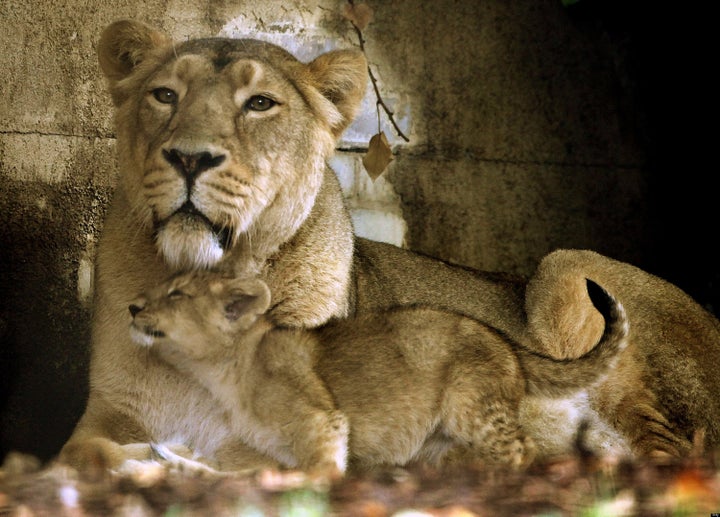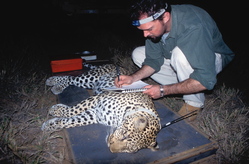
Barely a month goes by without news of someone getting into a tussle with a 'tame' big cat. A recent case in point showed a young lion in a South African resort roughing up a British journalist who thought it would make good copy to go into the animal's cage for a close encounter. It's easy to dismiss the stunt as journalistic nonsense (which it is) but dozens of operations across Africa sell similarly close encounters with lions to the average tourist. For a fee, just about anyone can play with cubs, take a stroll with young lions or pose for photos to show the folks back home.
Inevitably, the marketing behind these outfits is heavy on the C-word -- 'conservation.' Visitors are told relentlessly that, by handing over their cash to cozy up to tame lions, they are helping to save the species in the wild. There's little doubt that lions are in dire need -- they have been eradicated from over 80% of their range in Africa alone -- but don't believe their advertising. Churning out cubs for photo opportunities is a great revenue earner but none of those cubs are set free. They are too tame. If they were ever to wander into a village or farm looking for a belly rub or a feed, the surprised locals would, not unreasonably, reach for their rifles or spears. Even assuming there is someplace sufficiently wild and people-free, captive-raised lions simply don't have the skills and experience to survive. Many of the tame lions released by Joy and George Adamson (of 'Born Free' and Christian the Lion fame) starved to death, were killed by people and wild lions or, in some cases, killed people themselves and were shot.

(Photo courtesy of Luke Hunter)
The more sophisticated operations counter this by declaring that tame, tourist-friendly lions are not intended for release: rather, only later generations of captive-bred lions, not exposed to people, will be set free. Even setting aside the formidable obstacles in 'training' captive-bred lions to be wild, there simply isn't the need. In South Africa, there are now more than 500 reintroduced lions in 37 reserves -- the key difference being that all of them are wild born and bred. Starting back in 1992, South African biologists pioneered the process of translocating wild lions from marginal areas and reintroducing them into areas where people had wiped them out. It takes money and has risks, but considerably less of both than using captive lions. Wild lions captured in one place are already much better equipped to survive as wild lions in another place. But, of course, using wild lions to re-establish the species rules out charging gullible tourists for an up-close experience. Cue cub cuddling.
If all of this fails to convince you to think twice about paying for an 'encounter,' ask the handlers point blank how many of their lions have gone back to the wild? If they furnish you a figure, they are probably lying. As I write this, I do not know of one example. In fact, most of them never actually attempt releases. Which begs another question -- what really happens to their lions? When cubs grow up, they cost a lot to feed and maintain, and they need to pay their way somehow. No problem. There is a thriving market for lions, mainly in South Africa, among 'lion farmers.' They buy surplus cats, much as livestock producers buy new stock on auction, and they breed them. For hunting. As adults, the cubs that cavort with tourists often end up in the gun-sights of trophy hunters. It's quite legal provided you have the permits. If you don't believe me, have a look at this report from the excellent South African program Carte Blanche.
The bottom line is, the 'lion encounter' industry is only that -- an industry. I'm the first to applaud businesses finding ways for wildlife to generate a profit when it actually helps protect that wildlife. The same tourists who spend $200 for an afternoon of walking with tame lions could instead visit nearby national parks and game reserves where the entry price and lodge fees truly do help to conserve wildlife. For my money, stick with the real thing: no matter what the glossy brochures and slick websites claim, it won't ever involve tame lions.
 Dr. Luke Hunter is the Executive Director at Panthera, the leading global nonprofit organization devoted to saving the world's wild cat species, from the diminutive black-footed cat of southern Africa to the massive tiger of Asia. Hunter has conducted fieldwork on large cats in Africa since 1992. His current projects include assessing the effects of sport hunting and illegal persecution on leopards outside protected areas, developing a conservation strategy for lions across their African range, and the first intensive study of Persian leopards and the
Dr. Luke Hunter is the Executive Director at Panthera, the leading global nonprofit organization devoted to saving the world's wild cat species, from the diminutive black-footed cat of southern Africa to the massive tiger of Asia. Hunter has conducted fieldwork on large cats in Africa since 1992. His current projects include assessing the effects of sport hunting and illegal persecution on leopards outside protected areas, developing a conservation strategy for lions across their African range, and the first intensive study of Persian leopards and the
last surviving Asiatic cheetahs in Iran.